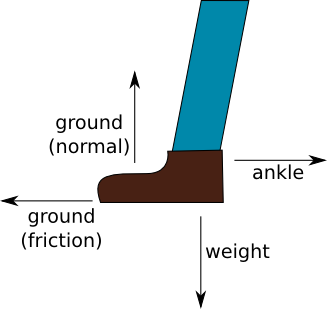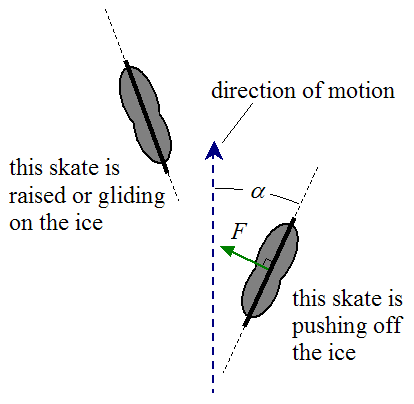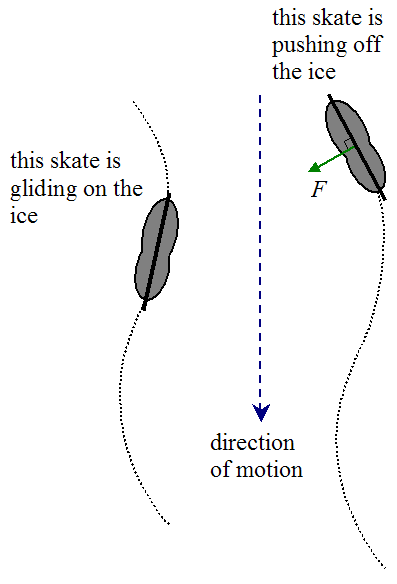Slipping vs Skating
Slipping vs Skating
| . |
Often in the winter, Rhode Island roads and sidewalks become coated with layers of ice. It usually happens as the snow melts in the afternoon sun and then the melted snow freezes at night, creating very slippery conditions. One of the most common solutions to this problem is salting and sanding the roadways and sidewalks. However, ice skaters prefer perfectly smooth ice while playing hockey or ice skating. This is because skaters need almost zero friction to be able to quickly glide over the ice. However, for most people during the winter, walking on ice is especially dangerous and great care should be taken.
Before and over winter break, this year alone, I have slipped in the LSA parking lot twice and took some spills. At home, I took a few more falls. Needless to say, I am not very skilled at walking over icy surfaces. However, over break, I attended a few of the boy's hockey games and went ice skating myself. These experiences clearly revealed the differences
 |
| Here is a free body diagram of a person walking. |
There are four forces that act upon a person walking. You have gravity working with the person's mass and you also have the normal force of the ground pushing on the person all in the vertical direction. In the horizontal direction, you have a force from your foot pushing backward, propelling you forward as you walk and the force of friction against the ground pushing in the opposite direction forwards. According to Newton’s second law, a net force causes acceleration, so if you want to slow down, speed up, or change direction, friction is what allows us to do so with ease. However, on ice, there is almost zero friction which makes this very difficult, rather than walking upon other surfaces or ice that has been treated with sand and salt. Salt lowers the freezing point of water by preventing the water molecules from solidifying into uniform crystals which allows for better road conditions. However, if it is extremely cold and the salt water can still freeze, it is better for a type of sand to be used to create friction on the surface.
When someone walks on an icy sidewalk they don't really have any friction. Without friction, slowing down, speeding up, or changing direction while on ice will be very difficult, and is the lead cause of my many falls on the ice. When you have sufficient friction, it’s able to slow down your feet to a stop almost immediately, allowing you to put your weight down, but on an icy surface, the friction doesn’t register, and your foot slips out from under you creating a fall. To prevent a fall, walking on snow is better than ice, although your shoes may get wet, they will have more friction to keep you steady. If you do have to cross icy roads, make sure to put your feet straight down and avoid turning until you’re on rougher ground.
| The grooved blade of skate, to create more friction. |
| . |
Also, for optimal speed, hockey skate blades are designed to cut into the ice to allow for sharp turns. For the most efficient shot in hockey to be taken, a player must raise the stick up behind their head behind themselves. Then the player strongly strikes the ice behind the puck and uses their weight to bend the stick which is essentially using the stick like a spring which allows the end of the stick to hit the puck. As this happens, the player rotates their wrists and shifts their weight to release stored energy and transfer the energy into the puck. The kinetic energy of the puck after impact is equal to the stored energy in the hockey stick which allows for a faster puck than if hit directly.
x=xo + Vo*t + (1/2)a*t2
A puck usually weighs from .158 to .163 kg and although I was unable to get a clear enough view of the puck in any videos, the estimated speed of a puck is from 75-95mph depending on the player and the shot. The estimated coefficient of friction would be anywhere from 0.047-0.05 depending on the period of the hockey game and the conditions of the ice. Whether the ice had been played on for two periods rather than freshly zambonied ice. The equations above would yield the acceleration, velocity, and coefficient of friction for a hockey puck.
 |
| The friction of skating Forwards. |
 |
| The friction of skating Backwards. |
Using LoggerPro software, I was able to find the velocity of a skater on the ice. This was done by setting the length of the rink to a standard measurement of 200ft (60.96 meters) and estimating the measurement of the skater as he skated to the goal line from the center line (red line), which was approximately 115ft (35.052) due to his angle. I also used the video where the player skated in a mostly straight line and timed the length of the skating through the video.
 |
| The velocity of a player skating towards goal, mainly accelerating until shooting the puck where he slows down and then speeds back up. |


Comments
Post a Comment